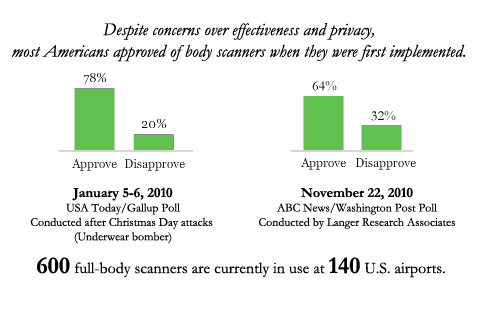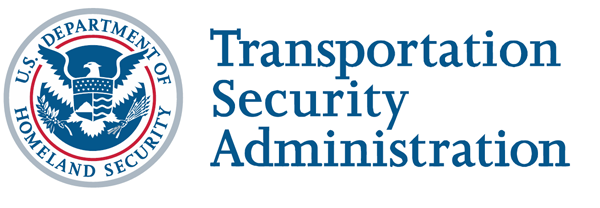[field name=”vid1″]
WASHINGTON – On March 3, Jonathan Corbett sewed a pocket on the side of his shirt, placed a metal carrying case inside and stepped in line to walk through a body scanner at the Fort Lauderdale-Hollywood International Airport in Florida – betting that the metal case would not be detected.
Corbett, an engineer and “TSA Out of Our Pants!” blogger, was running an experiment. He theorized that because the Transportation Security Administration’s imaging technology shows the human body as white and all metallic objects as black against a black background, concealing objects on the side of the body would make them “invisible.” He wanted to see if his metal carrying case on the side of his shirt would pass undetected by the body scanners.
“I was totally nervous,” he said. “I didn’t have a machine in advance to test it on at home or anything.”
He made it through, and ran the same test the next day at Cleveland-Hopkins International Airport through a millimeter wave scanner, one of the TSA’s latest models of imaging machines.
Corbett posted a video on March 6 titled “How To Get Anything Through TSA Nude Body Scanners,” detailing how he seemed to have outsmarted the TSA’s machines. The video quickly picked up steam on the Internet, drawing more than 1 million viewers on YouTube within a week and propelling Corbett into the media spotlight.
Corbett sued the TSA in November 2010 after the administration adopted the scanners, but the court case over the constitutionality of body scanners has proceeded slowly since then. To speed up the process and eliminate body scanners’ use for airport security, he had the idea that “if these body scanners were proven completely ineffective, the TSA would have to stop using them.”
But the TSA is skeptical of his claims.
“The video is a crude attempt to allegedly show how to circumvent TSA screening procedures,” the TSA said in an official statement released March 8. “TSA conducts extensive testing of all screening technologies in the laboratory and at airports prior to rolling them out the field…It is completely safe and the vast majority use a generic image that completely addresses privacy concerns.”
Questionable Effectiveness
At its surface, Corbett’s findings tackle questions over the machine’s technology, which are consistent with previous studies done by the U.S. Government Accountability Office and other agencies that have also looked into the efficiency of body scanners, according to Jay Stanley, a senior policy analyst at the American Civil Liberties Union.
“The effectiveness of the body scanners is highly questionable,” Stanley said. “What we’ve been saying since the beginning is that the costs and benefits of this technology don’t match up.”
The GAO reviewed the machines after a bombing attempt on Christmas Day 2009 by the “underwear bomber,” saying, “While officials said [the scanners] performed as well as physical pat downs in operational tests, it remains unclear whether the advanced imaging technology would have detected the weapon used in the December 2009 incident.”

(Shirley Li/Medill)
Reacting to Corbett’s video and defending the ability of the body scanners to detect explosives, TSA blogger Bob Burns explained on the administration’s official blog that the machines are just “one layer of our 20 layers of security…and is not a machine that has all the tools we need in one handy device. We’ve never claimed it’s the end all be all.” The post also pointed out that travelers can opt out of going through the body scanner and receive a pat-down instead.
The TSA uses two types of body scanners: backscatter X-ray machines by companies like Rapiscan Systems, and L-3 Communications’ newer millimeter wave device, both of which produce the white-on-black image Corbett tested. The former uses X-rays, while the latter bounces wave energy off the traveler’s body to detect anomalies.
Rapiscan released a statement on the video, assuring travelers the machines are effective.
“The threat detection capabilities of the Rapiscan Secure 1000 system have been extensively tested by the TSA, the UK Home Office, and other government security agencies,” the Rapiscan statement read. “These tests have demonstrated that the Secure 1000 is able to detect a wide range of metallic and non-metallic items regardless of where they are concealed on a person’s body.”
Privacy Questions and Government
Still, privacy advocates and others have criticized the technology as invading people’s privacy because they show a person’s nude body in determining whether the travelers have concealed items that could be security threats.
Corbett’s ultimate goal is not just to disprove the technology’s effectiveness, but to raise the issue of privacy with body scanners and the TSA security system.
“The initial thought was definitely the privacy concerns,” he said. “Essentially the TSA is saying, ‘If you want to fly, we’re either going to give you a virtual strip search or pat down your genitals or both.’ Those don’t seem like acceptable options.”
“They’re extremely intrusive technology,” Stanley said. “The basic concern is that they are highlyviolative of privacy and at the same time appear to be of questionable effectiveness, which leads us to wonder if they’re worth the tradeoff.”
Though the TSA dismissed the video in its blog post and statement, the scale of the response to the post shows Americans more aware of the discrepancies in aviation security, said Corbett.
“I think more and more Americans are saying, ‘Why are we doing this? Why are we letting our families be photographed naked, or our children be touched inappropriately in ways that no one is allowed to touch them, but because they have a TSA badge this is somehow acceptable for our safety?’” Corbett said. “More and more Americans are starting to stand up and say no as the horror stories continue to come out.”
According to Stanley, the body scanners will likely stay in use, despite Corbett’s efforts. However, he said the government should pay more attention to the flaws in the technology.
“The government is a big battleship, and it changes course only gradually,” Stanley said. “I think that one thing is clear is that they need to get rid of all scanners that don’t provide the body outline…We certainly hope that the TSA goes in that direction, and the government needs to invest more money into getting the basics of security rights.”
As for Corbett, the blogger said the TSA’s reaction shows the administration’s “arrogance,” and pointed out that the administration did not deny his attempt exposed a flaw in their system. In a blog post on Saturday, Corbett said he will file a Freedom of Information Act this week for a copy of the security video of him walking through the scanners as further proof, and encouraged his readers to talk about the issue with their senators and congressmen.
“Right now, the ball is still in the TSA’s court,” Corbett said. “It’s been incredible to see that Americans are now wise to what the TSA is doing and doesn’t like it.”







